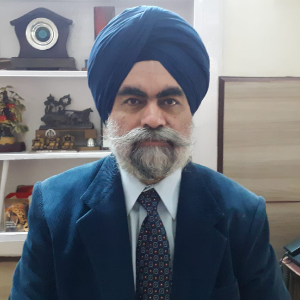Title : Prp therapy in OA knee- My experience (A series of 123 cases – 143 knees)
Abstract:
Introduction: Osteoarthritis (OA) is a major source of disability, pain, and economic burden worldwide. Genetic, biochemical, and mechanical factors are responsible for the complex multifactorial epidemiology of the disease. Abnormal joint biomechanics, age, gender, joint injury, and high body mass index (BMI), along with a strong genetic basis, are associated with OA development. Presently, OA is the eighth-most common disease in males world over and the fourth most common disease in females. Previously, OA was believed to be caused by the mechanical degradation of cartilage. But now the understanding is , this a complex of , mechanical, chemo- inflammatory , the pathophysiology is complex inter play leading to the production of matrix metalloproteinases (MMPs), nitric oxide (NO), and prostaglandins (PGs), leading to matrix degradation. The catabolic effects of interleukins secreted by chondrocytes, mononuclear cells, osteoblasts, and synovial cells interfere with the activity of growth factors and reduce the synthesis of aggrecan, which is the key constituent of the matrix providing resilience to cartilage. Interleukin-1β (IL-1β), the pro inflammatory cytokine, is a major protagonist in inducing arthritic changes, as evident by its increased levels in the synovial fluid of affected joints. Intra-articular injection of platelet-rich plasma (PRP) has been broadly considered for cartilage repair, as it could enhance matrix synthesis thanks to the properties of its growth factors (mostly platelet-derived growth factor (PDGF) and transforming growth factor-beta (TGF-beta) [6-8].To evaluate the efficacy of PRP intra-articular injections in OA knee patients . A series of 123 patients with different grade of OA. Assessing the recovery on VAS and WOMAC scale.
Methodology: 08ml of patient’s blood taken in two tubes containing 0.5 ml of Sodium Citrate (38%w/l). Centrifuged at the 4000 rpm for 20 min. Let sample rest for about 5 minutes, about 05 to06 ml of PRP is extracted. Patient shifted to operation theatre. After proper skin sterilisation and knee draping. This PRP is injected into the knee joint. 2nd injection of PRP repeated after one month. The patient’s progress is assessed at end of one month after the second injection and again at one year and then after 2years. Recovery assessed with VAS and WOMAC scale. Four aspects of WOMAC sore taken into consideration – 1) Pain at night, 2) rising from sitting, 3)walking on flat surface, 4) ascending and descending stairs, 5) performing light domestic duties 6) performing heavy domestic duties.
Results: In the series of 123 patients (143knees) taking into consideration the severity of OA as per K& J classification - Grade 2 (minimal) moderate joint reduction, Grade 3 (moderate) severe joint space reduction with sub chondral sclerosis, Grade 4 (severe) large osteophytes, marked narrowing of joint space, severe sclerosis and definite deformity of bone ends. BMI of the patient, age of the patient showed– 1) Pain at night- 95 to 100%, 2) rising from sitting 86 to 100%, 3) walking on flat surface 85 to 100%, 4) ascending and descending stairs 60 to 90%, 5) performing light domestic duties70 to 96%, 6) performing heavy domestic duties (60 to 95%) across various Grade of OA (Grade 2 to 4). Patients were also instructed for regular exercises to strengthen their thigh muscles and life style changes to bring their body weight in permissible levels as per their height.
Conclusion: PRP therapy in moderate to severe OA knee showed good to excellent results in improving pain during rest, pain free walk, climbing stairs. Patients who do not want TKR is worth trying. Up to two years follow patients are happy and pain free.




